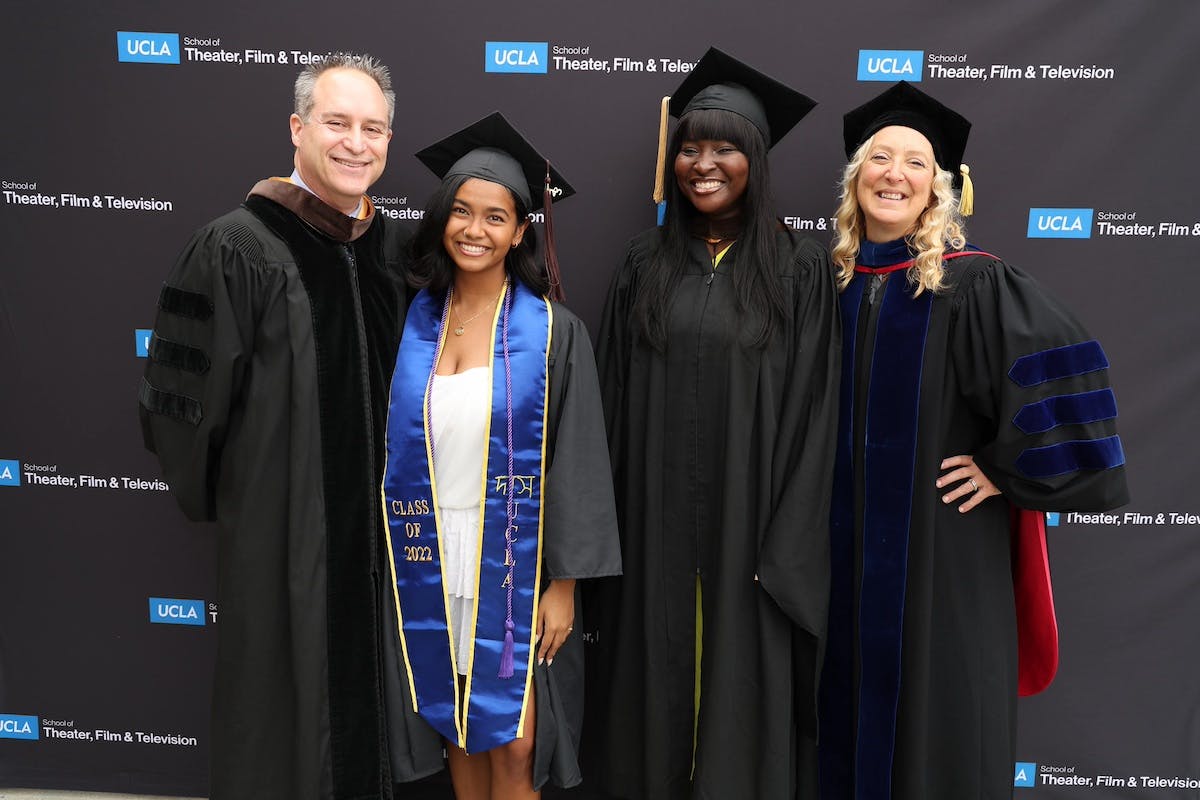‘Canonization' of Hindustani music favors some, marginalizes other, performing arts traditions

“How come Hindustani music, or North Indian classical music, is understood to be a national tradition, but really only exists in four or five major centers? What happened to the whole rest of India?” asks Anna Morcom, director of the UCLA Center for India and South Asia.
The Mohindar Brar Sambhi Professor of Indian Music at the UCLA Herb Alpert School of Music, Morcom teaches in the ethnomusicology department. Her scholarly work spans historical and contemporary studies of music and dance of India and Tibet, as well economic ethnomusicology, among other topics.
At present, she is finishing a monograph that “looks at classical music from the peripheries, trying to see how it all works. It joins the elite world of classical Indian music to a much larger musical world, which is how it operates,” she says. Her recently published article in the journal Ethnomusicology traces these relationships in one particular lineage of musicians, the Rampur-Sahaswan gharana.
“What about the small towns? What does happen there? Is it nothing? No,” answers Morcom. “There are music schools in the periphery, but they practice more low-brow versions of Indian classical music, which have come to be called ‘semi-classical’ or ‘light classical.’ They also support a lot of social mobility.
“In contrast to north Indian states like Uttar Pradesh or Bihar, in Maharashtra you still have a strong connection between light or semi-classical and classical Indian music through kirtan — Hindu devotional singing. That’s where you see mobility. It’s pretty tough, but musicians can move from a village to becoming a classical musician — although mostly as accompanists, not soloists.”
“Peripheries may be minorities or places that have less power, but you don't have the whole as such without them. Systems are never about just about their centers, you have to look at the connections,” she says.
“I thought it was time for a new book on Hindustani music, given the level of change in India since many of the classic studies were written. There’s been this huge economic boom, urbanization, globalization. I wanted to see how this music is working in the current context.”
Morcom’s last book, “Illicit Worlds of India Dance: Cultures of Exclusion” (Hurst and Oxford, 2013)*, examined how the marginalization of courtesans and cross-dressed performers in colonial India continued post-independence into the 21st century, most notably, with the banning of bar dancers in Maharashtra.
The reform of classical performing arts in the late 19th and early 20th centuries, she explains, essentially separated classical Indian dance from low-brow, low-caste and low-class women of courtesan lineages, as well as discredited female impersonators and transgender female performers. In the process, these communities were deprived of adequate livelihoods and driven into what became illicit sexualized performances, if not outright sex work, while upper-caste women in modern India took charge of classical dance.
Indian classical music became rarified to the point that it was associated with a higher purpose, observes Morcom. “This was not music for mere entertainment, but something you do really for God. The old feudal elite, particular Muslims, were decried as decadent, and it was claimed that classical performing arts were brought back to their true forms after this degraded chapter,” she says.
“Hindustani music had many genres,” she comments. “Yes, it was performed in temples and shrines, but that doesn’t mean it was extremely otherworldly or pious. Canonization and modernization have narrowed it in many ways, as well as expanded it in others, and this has raised some problems for its viability.”
Morcom will soon publish an edited volume that also focuses closely on livelihoods and social structures in South Asian arts, ‘Creative Economies of Culture in South Asia: Class, Craftspeople and Performers’ (Routledge; co-edited by Neelam Raina). The work puts performers and craftspeople side by side, because in India, traditional craft artisans, like professional musicians, were mostly low-class, low-status service providers.
“So much of the incredible beauty of Indian culture has been created by communities of subaltern people,” she continues. “The book also looks at the very different trajectories of crafts and performing arts in modernity, and the different ways that social status and gender impact them, amongst other things.”
The UCLA professor has also been busy co-editing “The Oxford Handbook of Economic Ethnomusicology” with Timothy Taylor.
In addition to publications, her position as director of the Center for India and South Asia (CISA), a position she has held since July 2022, has been drawing an increasing amount of Morcom’s energy and imagination.
“We’re really a hub of South Asian studies,” she says. “We have some 15 ladder faculty at UCLA whose work focuses on South Asia, plus we have many, diverse graduate students, including many from South Asian countries, whose research is also focused on the region.”
Morcom is working to build on the institutional legacy left by her predecessors at CISA, anthropologist Akhil Gupta and historian Sanjay Subrahmanyan — including a CISA speaker series, annual lecture, annual graduate student conference and the endowed Sardar Patel dissertation award.
She is keen to stress diversity in the center’s programming. “The Black Lives Matter movement has intensified a commitment among scholars of South Asia to deal seriously with the issue of caste in academia,” she says. Morcom also seeks to focus on South Asia’s indigenous peoples and peripheral areas such as Kashmir and Afghanistan.
Her view of intellectual diversity clearly includes a geographic component. In 2020–21, for example, she supported UCLA School of Music postdoctoral scholar Mohsen Mohammadi — now assistant director of CISA — to organize an eight-part series of webinars and performances on “The Indo-Persian Musical Confluence,” which highlighted the enduring conversation and exchange between Indian and Persian musical traditions.
Another goal of the CISA director is to re-invigorate and enhance awareness of the International Institute’s minor in South Asian studies. “That’s a top priority,” she says. “And once we really get the minor buzzing, we should consider a major. I would like there to be a thriving scholarly community on campus, and for UCLA to become one of the places to do South Asian studies.”
*The scholar’s other works include “Hindi Film Songs and the Cinema” (Ashgate, 2007) — which looked at songs written for Indian film before that industry became widely known as Bollywood — together with “Unity and Discord: Music and Politics in Contemporary Tibet” (2004, Tibet Information Network) and a video compact disc of Tibetan songs with singer Tanzin Gyatso,“sPrin Gui Metok” ("Cloud Flowers," 2006).

